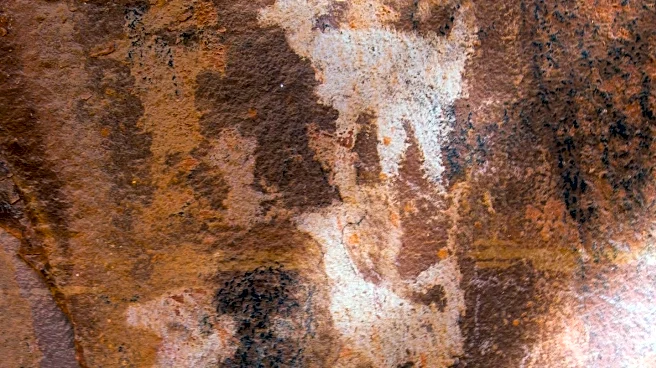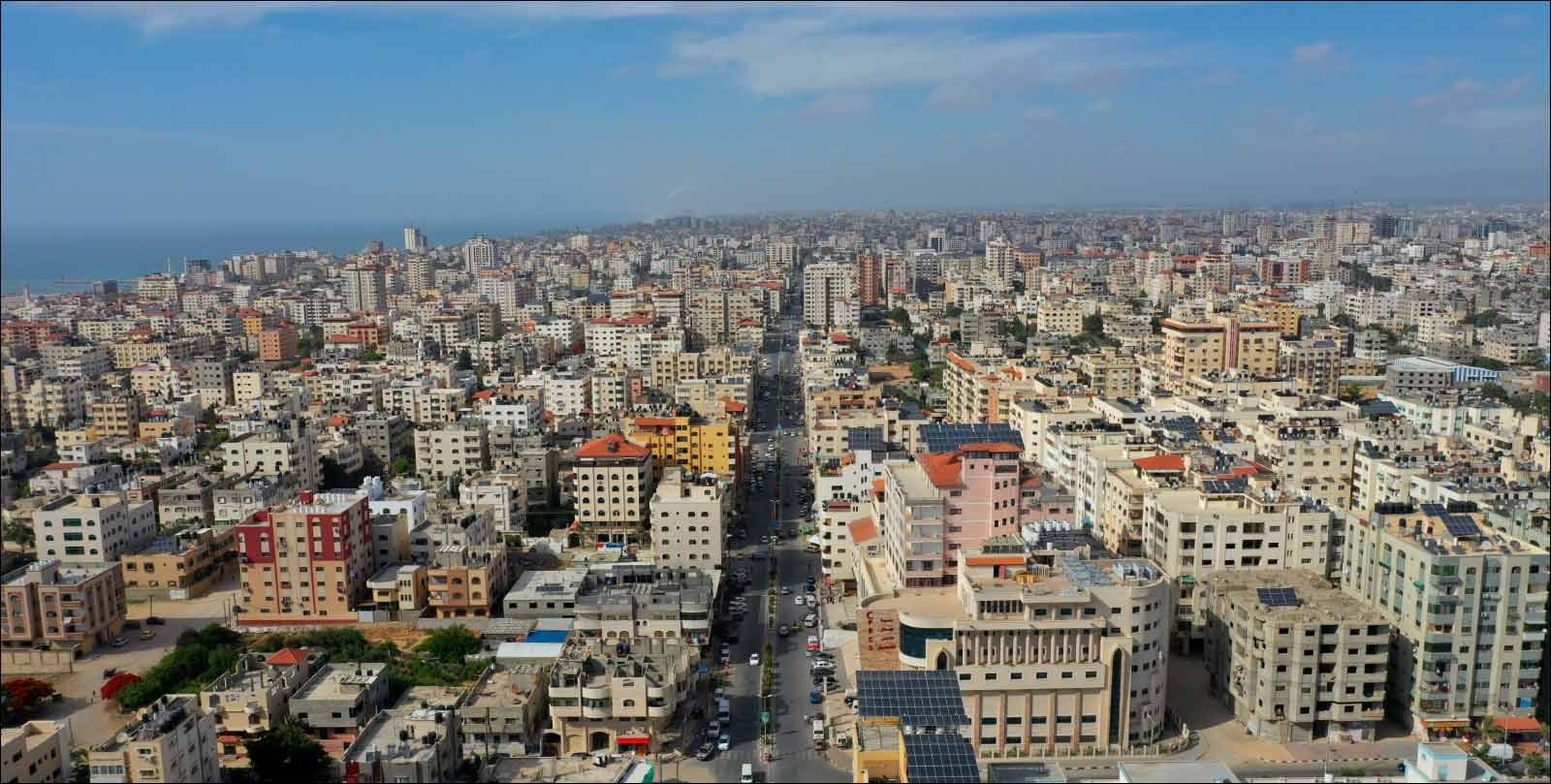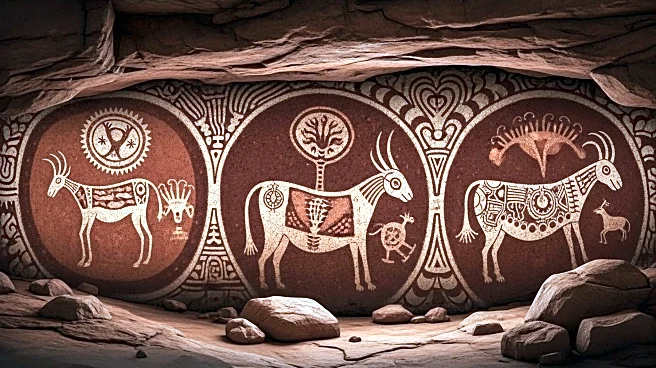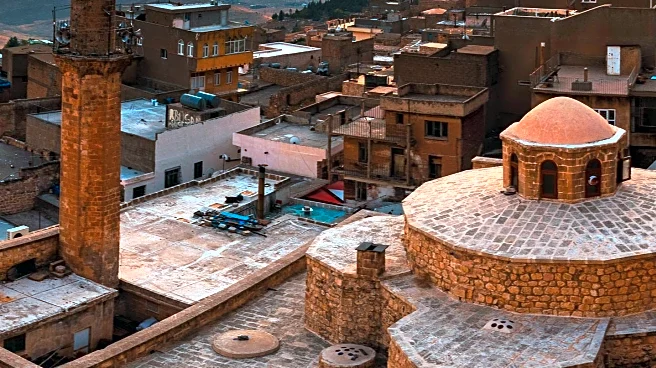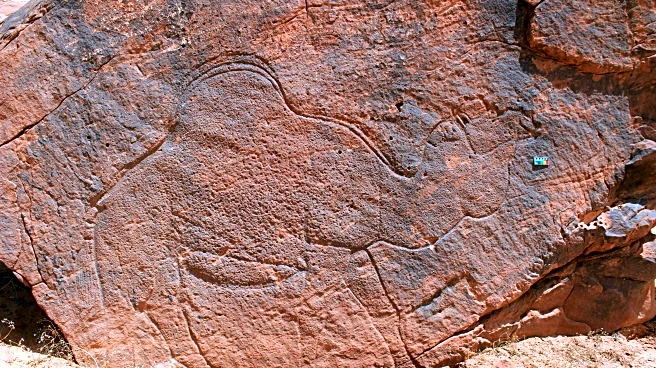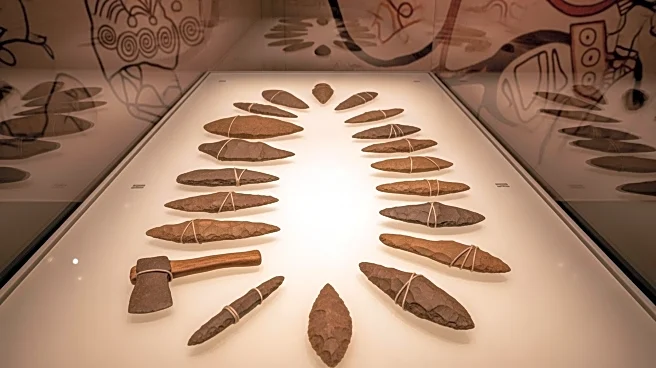What is the story about?
What's Happening?
Researchers have uncovered ancient rock art in the desert of northern Arabia, dating back approximately 12,000 years. The engravings, found on a 39-meter-high cliff, depict life-sized camels and other animals. These artworks were discovered by an international team near the southern edge of the Nefud Desert in Saudi Arabia. The engravings are believed to have marked important water sources in the desert, showcasing the resilience and innovation of ancient peoples living in harsh environments. The team used luminescence dating to determine the age of the engravings, finding them to be around 12,000 years old. This discovery provides insight into the lives of people who lived in the region during a time when the climate was much wetter than today.
Why It's Important?
The discovery of these ancient engravings is significant as it sheds light on the adaptation and survival strategies of early human societies in arid environments. The rock art indicates that these communities were part of a far-reaching network, sharing tools and cultural practices with groups as far as 400 kilometers away in the Levant. This finding also suggests that humans were able to thrive in the desert by utilizing seasonal lakes, marking them with monumental art. The research pushes back the timeline for when humid conditions returned to Arabia, providing a broader window for human settlement in the region. This contributes to our understanding of human migration and adaptation during the post-glacial period.
What's Next?
Further research is likely to focus on uncovering more rock art and artifacts in the region to better understand the cultural and social dynamics of these ancient communities. Archaeologists may also explore other potential sites in the Arabian Peninsula to find additional evidence of early human settlement and adaptation strategies. The findings could lead to a reevaluation of the timeline and extent of human migration patterns in the Middle East and surrounding areas.
Beyond the Headlines
The discovery of these engravings highlights the importance of preserving cultural heritage sites, especially in regions facing environmental and developmental pressures. It also raises questions about the role of art in ancient societies, particularly as a means of communication and survival. The camel, a central figure in the engravings, remains a powerful symbol of endurance in desert cultures, linking past and present human experiences in these challenging landscapes.
AI Generated Content
Do you find this article useful?
